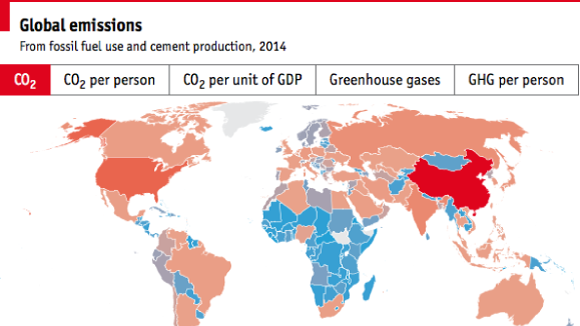The Economist – ABOUT 30 years ago Carlos Fuentes published a dystopian novel set in the near future about a city washed by acid rain. He called the town “Makesicko Seedy”.
In 1992 the United Nations identified Mexico City’s air as the most polluted on the planet. It is more breathable now, thanks to the closure of an oil refinery, the elimination of lead from petrol and numerous other green measures, but still not wholesome.
In mid-March this year local authorities issued the first ozone alert in nearly 14 years. There have been two since, prompting parents to keep their children home from school. After a spike on May 2nd the “environmental commission of the megalopolis”, a regional body, ordered 40% of the cars off the road, initially for a day. The order was then extended. This provided a respite but angered drivers. Mexico City needs better ways to clean up its air.
The city’s site, at an altitude of 2,250 metres and surrounded by mountains, makes that difficult. Solar radiation, more intense at high altitude, encourages the formation of lung-damaging ozone. The mountains trap the gas. With 5.5m cars, Mexico’s capital is the world’s most congested city, according to TomTom, a maker of navigation devices. If the current rate of growth in car ownership continues, the city’s fleet will double in size over the next four years.
The government’s sticking-plaster solution is to keep some vehicles temporarily off the road. In response to the March ozone alert it tightened the rules for “hoy no circula” (“don’t drive today”), a scheme that bans cars from the city one day a week (and one Saturday a month). Before, the rule applied only to the dirtiest cars. From April to June, all cars will be confined to their garages once a week. When the air gets especially noxious, as on May 2nd, the number of banned cars doubles.
This has done some good. In addition to purifying the air, the new rules reduced traffic jams by 30%, according to Waze, a navigation app. But they have provoked off-road rage, especially among drivers of cleaner vehicles. “Customers are furious because I can’t resolve their problems,” fumes Alejandro Nuñez, a repairman. Congestion and pollution will return as the number of cars expands. If the restrictions continue, more drivers are likely to buy cheaper, dirtier cars for days when their primary vehicles are immobilised, as some did when hoy no circula was first introduced.
To solve the problem, Mexico will need to spend more money more intelligently. Three-quarters of transport investment in urban Mexico goes into expanding and maintaining roads, according to the Institute for Transportation and Development Policy, a think-tank in New York. Some Mexican planners want to change that. The environmental commission advocates doubling the number of Metro lines to 24 and adding 1,000km (600 miles) to the bus rapid transit (BRT) network. The World Bank may lend 3 billion pesos ($170m) for public-transport projects nationwide, including an extension of one of the BRT lines. That will not come close to paying for the commission’s ambitious ideas, which would cost 40 billion pesos a year. Neither the city nor the federal government can afford that.
Nasty little buses
Among the most urgent needs is to do something about smog-belching, privately owned microbuses, which account for half of passenger journeys in Mexico City, says Francisco Barnés of the Centro Mario Molina, a think-tank. He proposes extending the BRT network to the busiest microbus routes and replacing dirty buses with cleaner ones on less popular routes. Other possible fixes would be more parking meters; ending a requirement that builders of new apartment blocks provide enough parking for all their residents; and a congestion charge. These would not be popular. Resistance from bus-owners and commuters may block such changes as effectively as they snarl up the city’s traffic.

